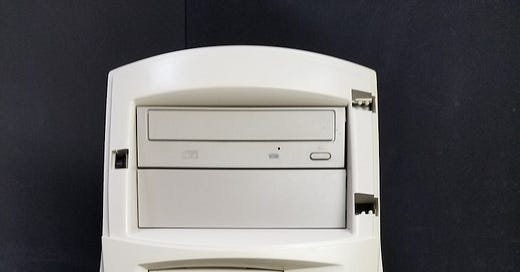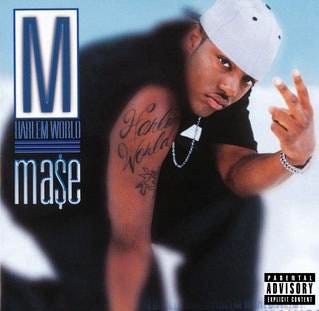Are Smartphones Making Us Dumber?
Our phones have revolutionized work and play - but are they really helping?
I’ll start this post by saying that there really isn’t anything we can do on a macro level to fix this. The Rubicon is in the rearview, the precipice has preci-past. We sowed the seeds years ago and are reaping their “rewards” with little to no ability to turn the tides of our collective addiction to the supercomputers in our pockets around.
Smartphones have created a world our parents could only have thought up after smoking some (weak) weed and putting Floyd on the turntable. And our grandparents? When we showed my grandmother in Boston how to BBM my brother in Prague I think she thought we were playing some elaborate prank on her. It’s a technology we take for granted that has absolutely transformed our professional and personal lives, but has it been for the better?
88 66 555 444 6 444 8 33 3 0 8 33 99 8 7777
Before there were unlimited iMessages (sorry green texters), there were text plans and T9 typing. This, along with classic snake, was the beginning of when phones stopped being simple phones and began their ascent into what we know today as the devices to which we are unequivocally chained.
From there came some simple email and very basic web browsing. We still used our computers for anything beyond very very basic tasks that required the internet. Then Blackberrys hit the scene.
It’s hard to understate the impact Blackberrys had on our work lives. Email - already a productivity killer and a way for work to stalk people home - was now in your pocket and not just available after booting up your Compaq for ten minutes. It was the beginning of the end.
9 44 2 8 0 44 2 8 44 0 4 666 3 0 9 777 666 88 4 44 8
Today, phones are supercomputers in their own right and we are utterly glued to them. Look around next time you’re in public and take note of how many people are on their phones - and not talking on their phones, but looking at the screen. And this is the crux of the issue: phones aren’t phones anymore, they’re simply another screen.
And they’re killing us. Not in a “Bill Gates wants me to eat bugs and has invaded my sovereign citizen body with his 5G technology” way. Rather in a very real way.
NHTSA predicts that over 3500 people die a year due to distracted driving - the lion’s share going to phone-related distraction. That’s nearly 10% of all traffic deaths in a country where driving is vastly more dangerous than in other high-income nations. But that’s simply the most obvious and immediate reason our cell phones are killing us.
55 444 555 555 444 66 4 0 6 33 0 7777 666 333 8 555 999
The cellular assault on our collective well-being has two fronts: our physical health and our emotional health. And it is a formidable foe.
Physically, our phones are beginning to emerge as drivers of arthritis. We’ve had similar issues with technology and pain in our hands, but things like carpal tunnel syndrome are usually addressed with exercise and PT. Arthritis? Not so much.
Once you wear down that cartilage you can’t really regenerate it. The way we hold our phones and thumb across them (this is so ubiquitous that social media marketers refer to killer creative as “thumb-stopping content”) is going to lead to arthritis of the thumb joint. Is this apocalyptic? No, but ask my all of my major joints on my right side if not taking care of them after pitching baseball games growing up was a good decision (spoiler alert: it was not and everything hurts.)
You might be saying to yourself, who cares? I’m probably getting arthritis anyway and they’re just thumbs - you know, one of the major evolutionary links in what makes us useful animals. There’s also some research coming out linking “text neck” to our obsession with constantly hunching over and looking down at our phones. I already have bad posture and constantly being on my phone makes me look Quasimodo. Even if I didn’t want my thumbs to be functional in old age (spoiler alert: I do), I damn sure want my neck to be.
9 8 333 0 3 444 3 0 999 666 88 0 7777 2 999 0 8 666 0 6 33
Let’s throw the physical stuff out - phones are only one aspect of how our modern lifestyle is harmful to us and if it’s not phones, it will be something else. A pessimistic but fair argument.
To begin, attention spans are shrinking as the years go on, and smartphones are major contributors to this. As the problems at work become more complex and solutions require more strategic and deep thought, this is a worrisome trend.
On top of that, the way we communicate via phones is killing our relationships. I’m not talking about going to dinner with a dear friend and sitting on your phone the whole time - that’s an easy fix. I’m talking about the loss of nuance and tone when we communicate via text or IM instead of IRL.
You’ve probably heard that an insane amount of face-to-face communication is conveyed non-verbally - 90% is often the number thrown out. Obviously this feels like a bit of a stretch, but it turns out that using the accepted 55/38/7 formula, 55% of communication is non-verbal whereas 38% is vocal (essentially tone) and 7% is made up of the words alone. So when you switch from face-to-face to the phone, you lose 55% of communication cues. When we switch from face-to-face to text or IM, you fall back on solely that 7% (and now that 90% number doesn’t seem as preposterous.)
Not only do we lose those major communication cues, we tend to use text as a crutch to lie, be passive-aggressive, or simply avoid conflict. In other words, we say things online we never would say in real life - we all know the people who are much easier to talk to on a call or in an in-person meeting than when they’re being difficult over email.
666 55 0 7777 666 0 66 666 0 9 44 2 8
So we know the ways phones are killing us - what do we do now? As I said in the intro, there are no macro things we can realistically do at this point. Smartphones are so ingrained in our personal and professional lives that removing them would be beyond disruptive to how we live.
But there are small things we can do. Again, these are tiny compared to the outsized influence these devices have in our day-to-day, but every little bit can help.
Personally, I’ve turned off push notifications for email and instant messages on my phone. Working on a global account, my phone would go off all night and even with Focus turned on, getting hit with all those notifications in the morning was not a great way to start the day. If I know things are hot, I keep an eye on my instant messages more closely and my team knows to text me when it’s an actual emergency and not a wheel-spinning exercise. It’s definitely made a difference and it puts email back in the “non-urgent” category where it firmly belongs.
One thing I’ve always done and will continue to do is read paper magazines and books - it’s like a sauna for my brain. Even when I was on the digital side of the business at Penguin Group I still read on paper - there’s something about the tactile aspect of it, and it doesn’t hurt that analog reading is better for comprehension than its digital counterpart. It’s a great break from consuming information on a screen and long-form reading in and of itself is good for your brain.
Finally - and this isn’t revolutionary - but I simply try to be more mindful of those small moments where I pull out my phone to simply kill time. I’m guilty way too often of simply opening my phone and going through the same apps over and over again just to pass the time and look occupied. Given everything written above, I’ll be doubling down on that effort.
Grab Bag Sections
WTF MTA: When the OMNY tap system came out in the New York City subway, there was little fanfare because other subway systems with much worse pedigrees (sorry CTA) already had been offering this service to their riders for years.
So you’d think the technology that the MTA chose would be proven and work. Dear reader, I am here to tell you that it’s not as seamless as it should be. There are a couple of OMNY turnstiles at the Grand Central 4/5/6 entrance that consistently don’t work during morning rush hour. Cards or phones both come up short during this crucial period. I’ve witnessed this multiple times and even heard someone say last time “Oh yeah, this happens.” Woof.
Quick sidenote: I am begging all people using their smartphones at these turnstiles to turn on Express Mode.
Album of the Week: It was fall 1997. I had enough money to buy some posters and a CD at Newbury Comics from mowing lawns around my neighborhood. That CD ended up being Mase’s debut album Harlem World.
The album bounces around from pop hits (“Do You Wanna Get Money,” “Feel So Good”) to actual rap songs (“24 Hrs to Live,” “Ns Wanna Act.”) The production combo of Puff Daddy and D-Dot shines (outdone only on Diddy’s No Way Out and Biggie’s Life After Death) and even the skits, typically an annoying mainstay of rap albums of the era are half-decent.
This post is already running long, so we won’t get into how after this album Mase released a sub-par sophomore album in ‘99 and immediately found God and quit rapping (before a meh Welcome Back was released in 2004.) He currently hosts a popular sports podcast with fellow Harlem rapper and high school basketball teammate Cam’ron. Like the LOX, I see Mase as another artist Bad Boy Records could not turn into the star he could have been. Not Diddy’s worst quality (as we’re finding out more and more lately), but disappointing nonetheless.
Quote of the Week: “It is never too late to be what you might have been.” - George Eliot
See you next week!
Made it this far? Awesome! If you’re wondering what the section titles were about, here’s a handy T9 texting decoder.








